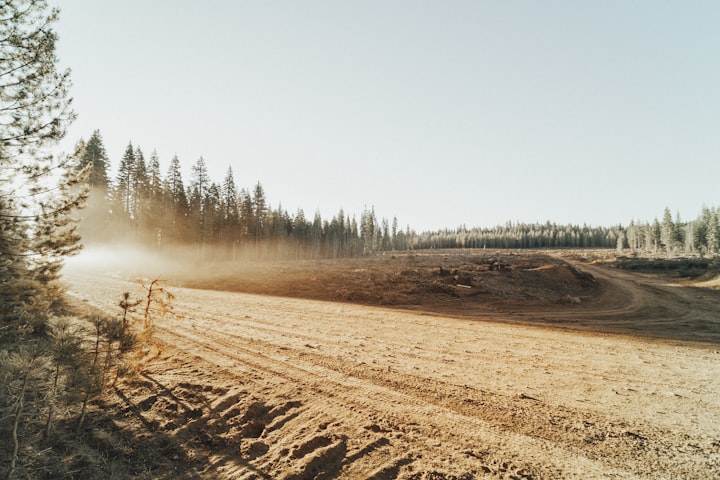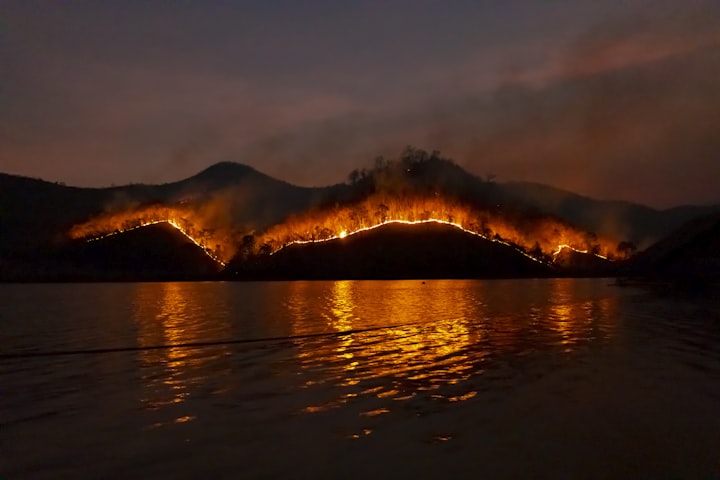The Tree Graveyard
Every dead tree removes another carbon sink that protects our biosphere.

Recently, my wife and I drove from Vancouver up into the Kootney area of British Columbia, Canada to visit our daughter. She lives in a small town in the Columbia Valley which is itself in the Kootenays, in the foothills of the incredible Rocky Mountains. The weather the previous few months had been wet and mild and as a result, the countryside was lush and green, the meadows carpeted with beautiful displays of wildflowers of every color and shade.
Anyone who has visited this part of the west coast of North America is familiar with the miles and miles of forest that stretch from the coast to the rivers valleys and halfway up the slopes of the mountains that are snow-capped for a good part of the year. Driving from the coast to the Columbia Valley involves a drive of around 10 to11 hours including stops and is for the most part through mile upon mile of beautiful forests showing little signs of habitation but many signs of human activity in the manner of the scars of logging roads and clearcut electric transmission towers right-of-ways.
However, when driving through this part of the world with its great forests, it is hard to believe we are living in an over-crowded world with poverty and violence so prevalent in many countries.
The most disturbing aspect of the drive and seen too often on many mountain slopes are vast areas where trees have been “harvested” as the logging industry likes to call it. Something along the lines of harvesting fish or cattle. I like to call it what it is – clearcutting.

Just outside the town where our daughter lives is a processing plant for trees, otherwise known as a sawmill. My daughter calls the area where the harvested trees are stacked, “Tree Graveyard”. Every day, seven days a week, huge logging trucks rumble into the processing plant and dump loads of logs. These logs come from our forests, forests that are integral to the health of the planet. How many more years can this slow but ongoing destruction of these forests critical to our very survival carry on?
Intuitively, it is easy to understand that forests play an important role in regulating the global climate. Photosynthesis captures carbon dioxide and stores it in trees. The role of forest harvesting and so-called management in modern times, however, is less clear and needs extensive studying. In years when the forest ecosystems of the Pacific Northwest experienced drier summers, forests evolved with wildfire, which often occurred frequently and at low to moderate rates. Over the last century and a half, dry forest landscapes have been significantly modified by human activities, namely fire suppression, overgrazing, and pests such as the mountain pine beetle. This has left large patches of dead trees interspersed among the coastal forests that burn with greater intensity than surrounding live trees.
Poor planning and development pressures are increasing the risk of wildfire to human populations and causing dramatic increases in the cost of fire suppression. Across the country, home construction in forested areas is putting wildland firefighters in increasingly precarious positions, sometimes leading to tragedies such as the Fort MacMurray wildfires of 2016.

A warming climate is now exacerbating an already colossal problem. Fire season is now, on average, 78 days longer than it was in 1970, and in some places, such as Southern California, fire season is now as long as 300 days each year.
In the face of climate change, active forest management and restoration in temperate forests will be critical in ensuring that the forests continue to function as carbon sinks. Leveraging additional resources, building agency capacity, and supporting innovative state and federal and provincial partnerships will be critical in achieving that end.
Forests absorb carbon dioxide from the atmosphere and store it in carbon pools, which include trees, both living and dead, root systems, undergrowth, the forest floor, and soils. Live trees have the highest carbon density, followed by soils and the forest floor. Harvested wood products and landfills also store carbon. When a carbon pool decomposes or is burned, it releases carbon as carbon dioxide back into the atmosphere. Invasive insects and diseases, drought, wildfires, and urban development, all of which can be compounded with a changing climate that can affect the amount of forestland and the rate of carbon sequestration and storage.
Forests still cover about 30 percent of the world’s land area, but they are disappearing at an alarming rate. Between 1990 and 2016, the world lost 502,000 square miles (1.3 million square kilometers) of forests, according to the World Bank—an area larger than South Africa.
If you have any comments, disagreements, or additional information on this post, please contact me either through my website.
Follow me on TWITTER, FACEBOOK & LINKEDIN.

About the Creator
Michael Trigg
I love writing and I think it shows in my posts. I also enjoy feedback, particularly of the constructive kind. Some people think I am past my "best before date" but if that is true, it just means I have matured.






Comments
There are no comments for this story
Be the first to respond and start the conversation.